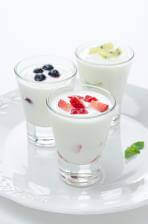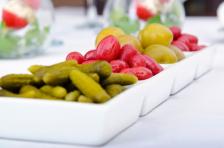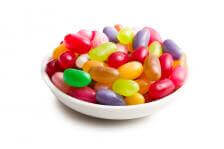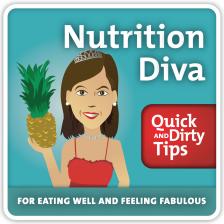Can Processed Food Be Healthy?
We hear a lot about the dangers of “processed” foods these days. But some kinds of processing can make food better for you. Nutrition Diva explains how to tell the good guys from the bad guys.
Last week, I had the pleasure of spending some time with the wonderful physicians, nurses, and administrators of a healthcare company called Health by Design in San Antonio,Texas.
In one of my presentations to this group, I said that as processed foods have come to make up more and more of our food intake, the nutritional quality of our diet has suffered.
Sponsor: Thanks to Zulily for supporting our channel. Get 15% off your first purchase at zulily.com/diva

I realized that I have been guilty of using the word “processed” in a sort of lazy way, as a blanket term to describe foods that don’t add much – or even detract from – the nutritional quality of our diet. As if all processing is the same and all processed foods are bad for you. But, of course, this isn’t the case at all.
See also: Processed Foods: How Much Is Too Much?
Some forms of processing strip nutrients from foods and add undesirable chemicals, creating more concentrated sources of empty calories. But processing can also do many desirable things, such as removing impurities, killing pathogens, adding or creating beneficial compounds, and making nutrients more bio-available.
See also: How Cooking Affects Nutrients
Take yogurt, for example. Milk is first pasteurized to kill harmful bacteria. It’s then inoculated with active cultures and warmed to promote the growth of probiotic bacteria. As they multiply, these bacteria break down much of lactose in the milk, making the milk more digestible. They also prevent the milk from spoiling as quickly as it otherwise would.
Not All Processed Foods Are Bad for You

Now let’s take an example from the other end of the processed food spectrum: jelly beans.
We start with sugar cane and corn, two plants that aren’t terribly nutrient-dense to begin with. Whatever nutrients they do contain, however, are removed in the refining process that turns them into sugar and corn syrup. Then artificial flavors and colors, gums, emulsifiers, and preservatives are added to create a processed food that adds nothing to the diet but a concentrated source of sugar.
See also: Why Is Sugar Bad?
Most processed foods, of course, are going to fall somewhere between these two extremes. Clearly, some are better than others. My point is that it’s not necessary or even desirable to eliminate processed foods from the diet. Much like the word “toxin,” the word “processed” is so poorly defined and so overused that it is not really that meaningful or helpful.
“Industrial” is another word that gets tossed around a lot these days—as in, “industrial food” or “industrial processing.” But when you think about it, the size of the processing operation really has no bearing on things. I can make marshmallows in my own kitchen and they are obviously a lot more processed (and far less healthful) than hummus that’s made in a giant food processing plant.
4 Questions to Ask About Processed Foods
When we’re evaluating a “processed food” to figure out whether or not it fits into our goals for a healthy diet, we need to take 4 things into consideration:

2. What is being removed? As I said earlier, processing can render a food safer by removing impurities or pathogens. But processing can also remove nutrients. When we cook fruits and vegetables, for example, some nutrients are destroyed by heat or leached out by water. Nonetheless, cooked or canned vegetables are still very nutrient-dense foods. In fact, certain nutrients, such as the lycopene in tomatoes, are actually increased in the cooking process. When we refine grains, on the other hand, we remove the most nutritious parts of the plant and leave very little nutritional value behind.
See also: What’s the Most Nutritious Way to Eat Vegetables?
3. What is being added? Some forms of processing, such as fermenting, canning, and drying, add nutritional value to a food by introducing beneficial bacteria, concentrating the nutrients, or making nutrients more absorbable. Other kinds of processing add undesirable things, like sugar, artificial colors, flavors, and preservatives. Often, it’s a bit of each and the question is how the gains offset the losses.
4. Why are we processing it? Most food processing is done to enhance palatability and to extend shelf-life. So, I think the ultimate test of a processed food is whether the processing allows us to eat more of the foods that we want to emphasize in our diets? Or does it simply encourage us to eat more of foods that we’d be better off without?
Keep Your Nutritional Goals in Mind
The whey powder that I add to my morning smoothie, for example, is highly processed. But it helps me get more protein in my breakfast, which helps set me up for better day. And when the doctor’s mom preserves her vegetables, it allows her family to enjoy those home grown vegetables throughout the winter. Both are processed foods that move us closer to our goals, not further. So let’s not throw the baby out with the bathwater!
Please feel free to add your comments or questions below or on the Nutrition Diva Facebook page. And if you’d like to find out about have me speak at your event or workplace, you can send an email to speakers@macmillan.comcreate new email
And don’t forget to sign up for my free weekly newsletter with more tips, recipes, and answers to your questions.
Canned foods and jelly beans images courtesy of Shutterstock.








